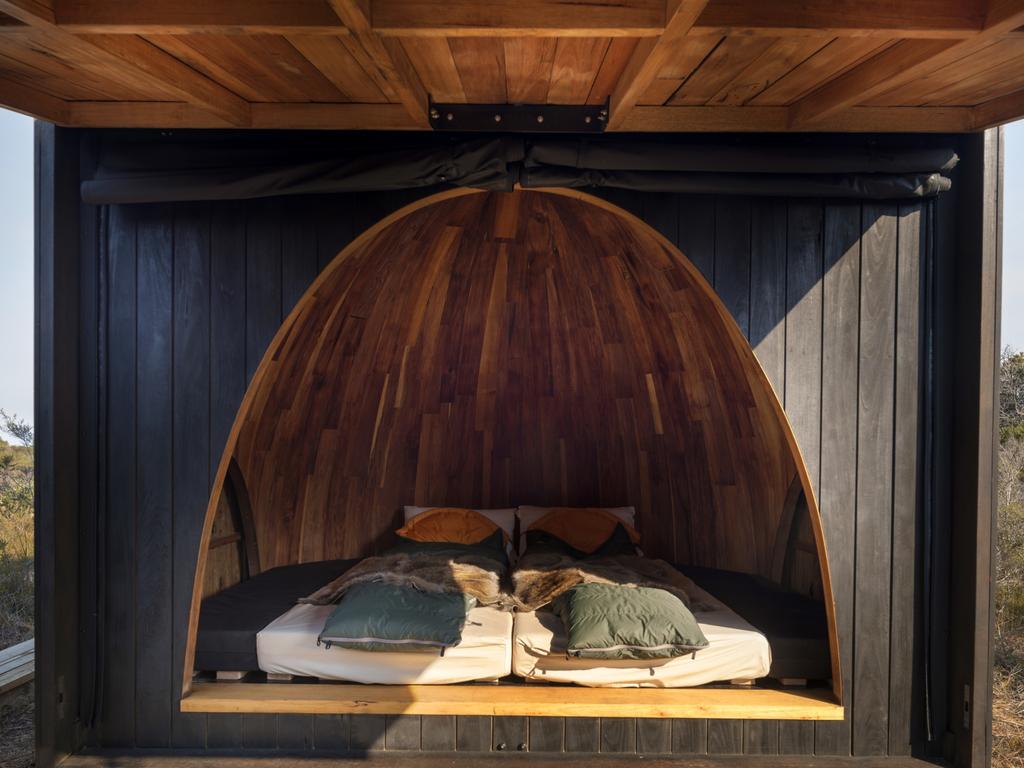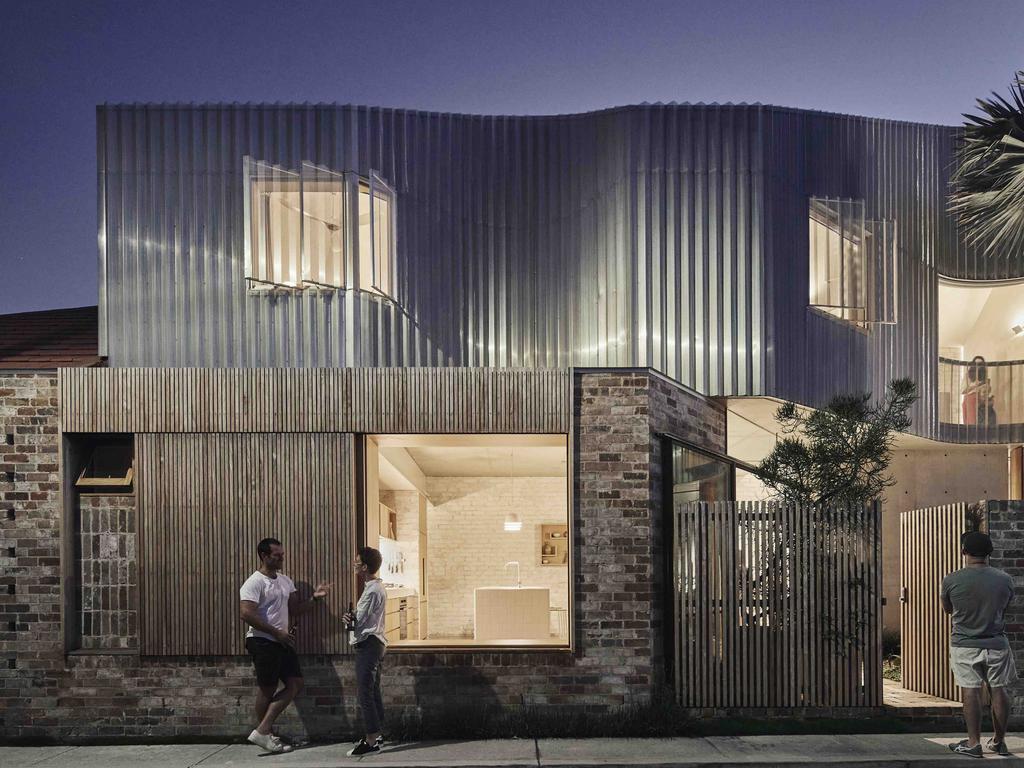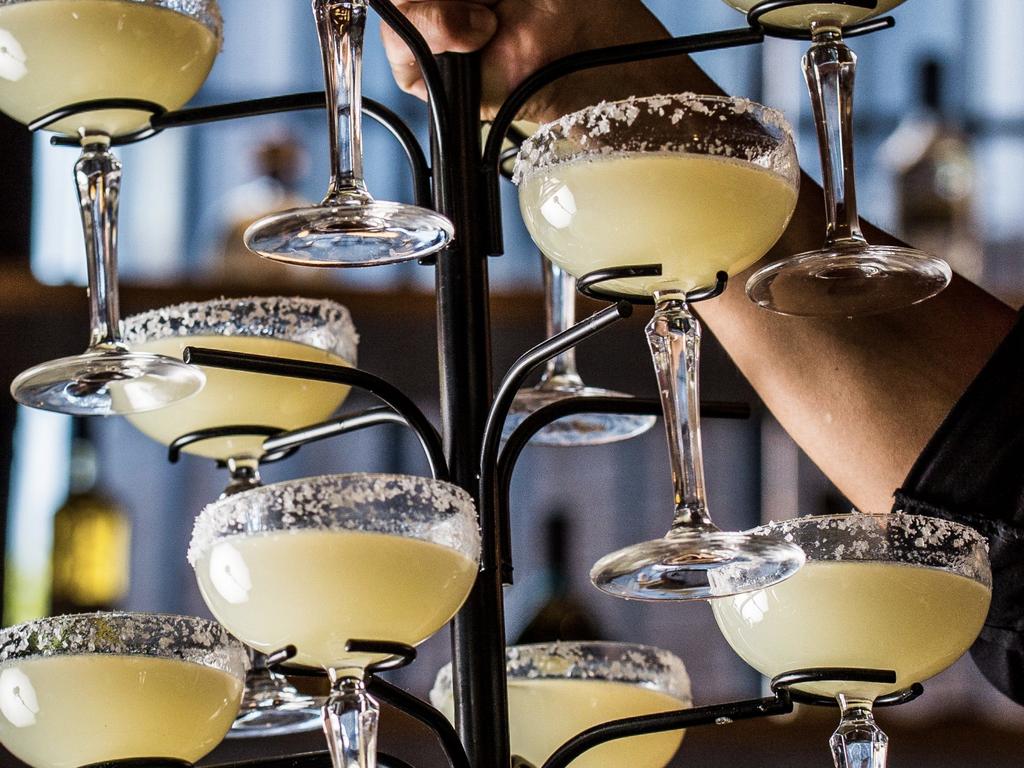Coonawarra wine country is all down to earth
This South Australian wine region has been reaping the benefits of border closures.

The locals like to say Coonawarra is the “most regional” wine region in Australia. Which is a subtle way of saying it’s not really close to anywhere. At four hours’ drive east of Adelaide and five hours west of Melbourne, it’s mostly serious wine buffs who make the pilgrimage to these acclaimed winelands on South Australia’s Limestone Coast. Or that used to be the case. Like many regional centres, Coonawarra has been reaping the benefits of border closures as pandemic nomads venture farther from their comfort zones. Some producers reckon last July, when the first state lockdowns eased, was the busiest they’ve been.
But Coonawarra’s cellar doors remain refreshingly low-key and are never thronged like, say, those of the Barossa or Hunter Valley. “On an average day we might get 40 people through the cellar door, but that’s over the whole day,” says Tony Gleeson, cellar door manager at Wynns, the region’s biggest and best-known winery. “That’s what people really love about this region … it’s laid-back, with good booze.”
To cater to the new wave of visitors, wineries have upped their offerings with cooking classes, tasting tours and even a new-ish app, the Coonawarra Wineries Walking Trail, tracing the stories and attractions of six neighbouring vineyards. Coonawarra’s 26 cellar doors are mostly ranged along the Riddoch Highway. This thoroughfare neatly bisects the vines that flourish on a prized patch of earth roughly 20km long and 2km wide. That’s the extent of the area’s famously fertile terra rossa soil which, combined with cooling coastal breezes, lends its red wines their distinctive character and charm. And being so compact makes navigating by car super easy, but walking’s the ideal way to be immersed in the bucolic surroundings. On foot, you can smell the roses lining the road, hear raucous galahs and cockatoos, and watch fruit ripen almost before your eyes.
My first stop on the walking trail is DiGiorgio Family Wines, one of the region’s oldest vineyards, where I arrive just in time for lunch. The staff have kindly arranged a “wine flight with six bites” to showcase family wines alongside regional SA produce. It’s a delicious way to savour the sparkling blanc de blanc with, say, a morsel of Onkaparinga chevre and beetroot relish; a citrusy riesling with smoked trout from Beachport, a coastal town about 95km away; and the 2016 cabernet sauvignon with pork terrine and piccalilli. Cabernet sauvignon is the grape behind Coonawarra’s fame. It was first planted here alongside shiraz and fruit orchards back in the late 19th century. That’s when Scotsman John Riddoch founded the Penola Fruit Colony and proved this rare terrain, comprising iron-rich clay over the limestone crust of an ancient seabed, grows fantastic fruit. All the big winemakers have since staked out their turf, with domain names writ large beside the highway — Penfolds, Yalumba, Leconfield, Katnook, Lindemans, St Hugo.

DiGiorgio, the region’s second oldest vineyard (planted in 1908 by Bill Redman, who built on Riddoch’s legacy and brought Coonawarra reds to world attention), is tucked down the end of a towering eucalypt avenue and fronted by 120-year-old shiraz vines. Aside from grape and produce grazing, the cellar door offers barrel tastings with winemaker Peter Douglas, pasta-making classes with matriarch Rita and her daughter Anna, and vineyard tours that finish in the cellar for meatballs and aged wines. “In the past two or three years we’ve got a lot better at catering to tourists, creating experiences to encourage friends and families to linger,” DiGiorgio marketing representative Katie Lewis says.
It’s a pleasant wander south, past vines and winemaking sheds, to Zema Estate where Italian-born house painter Demetrio Zema and his wife Francesca first made full-bodied reds and bottled the wine in recycled longnecks back in 1982. Today it stands out from the Coonawarra pack for its museum list and a small pantry selling Francesca Zema’s homemade chilli paste and olive oil.
Cabernet sauvignon unites the various wineries but each has a unique story and unique wines. Many are available only at the cellar door so there’s a strong incentive to come here in person to sample, say, Wynns’ new cabernet rose; the sparkling merlots at Zema or DiGiorgio (bubbly reds are so South Australian and always consumed cold); and about half a dozen Brand’s Laira vintages including a lovely, off-dry Old Station riesling and the fine 2020 Old Station rose.

It’s wise to book in for lunch at Fodder, the cellar-door restaurant of Ottelia wines, open Thursday to Monday, and set in an old schoolhouse beside Coonawarra Memorial Park. Here chef Paul Stone, ex-Melbourne’s Supernormal, bakes sourdough daily and serves locally grown meats with his own garden produce inside or under the shade of courtyard peppercorns. Ottelia sources its fruit from across the Limestone Coast to produce a dozen wines including whites from Mount Gambier (the riesling’s as crisp as a granny smith), shiraz from Robe and cabernet sauvignon from its own Coonawarra vines.
A short stroll north lies Brand’s Laira, its sharp new cellar door of polished concrete, recycled timbers and glass encasing a 19th-century fruit-packing shed lined with the dusty bottle collection of the vineyard’s founding father, Eric Brand. Information posts studded throughout the 280ha property chart its history since sea captain Henry Stentiford planted shiraz grapes here in the 1890s. Those vines still survive by the highway, producing fruit for the Stentiford’s Old Vines Shiraz.

Redman vineyard next door hails from 1908 but became a force in the 1970s for its Coonawarra claret, a shiraz-cabernet blend. The family’s 35ha of vines — two-thirds shiraz, the rest cabernet sauvignon –— all grow within a kilometre of the cellar door. There’s also a plot of riesling accidentally planted in the 70s, according to sales and marketing boss Dan Redman, that his mum and aunt decided to turn into wine. It has been sold at the cellar door since 2018, the same year Edna’s rose shiraz, named after his grandmother, was introduced.
The triple gables of Wynns are the Coonawarra’s most recognisable symbol and arguably its biggest drawcard. The region’s largest producer, with 800ha of vines, has an engaging house museum charting the history of the property and local grape-growing. Several tours offer the chance to blend your own wine. Its top drop — the only Coonawarra red rated “exceptional” under Langton’s Classification of Australian Wine — is the John Riddoch cabernet sauvignon, a superbly smooth mouthful of dark berries and dried mint.
Don’t drink and drive. Stay overnight at historic Penola, the heart of Coonawarra and the spot where Mary MacKillop (now St Mary) opened her first school, or preferably among the vines at Yalumba’s Menzies Vineyard Retreat. Its twin rammed-earth apartments each feature two bedrooms with open fires, full kitchens and charming outlooks on to vines and remnant native bush And they flank the Yalumba wine room where vineyard manager James Freckleton hosts tastings by appointment. These are deliciously good fun and as we’re sampling a wild-ferment pinot grigio grown up the road at Wrattonbully — a wine region even less explored than Coonawarra despite having the World Heritage fossils of the Naracoorte Caves on its doorstep — I mention to Freckleton how relaxed the vibe is here compared with more accessible Australian vineyards.
“My friends just love it because they can basically get into any cellar door they want,” he agrees. “And there are no bad cellar doors here.”
Kendall Hill was a guest of Yalumba at Menzies Vineyard Retreat.





To join the conversation, please log in. Don't have an account? Register
Join the conversation, you are commenting as Logout